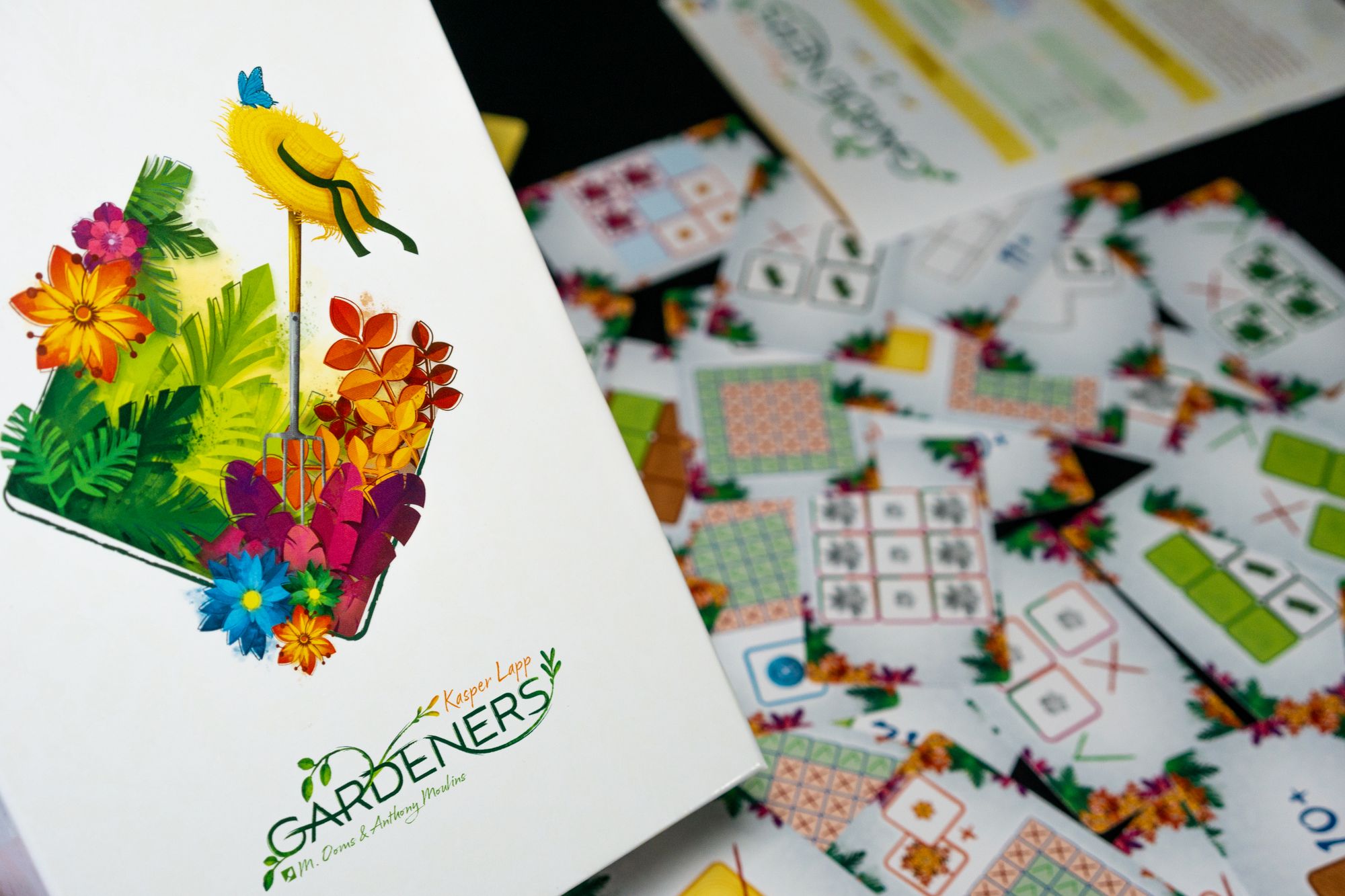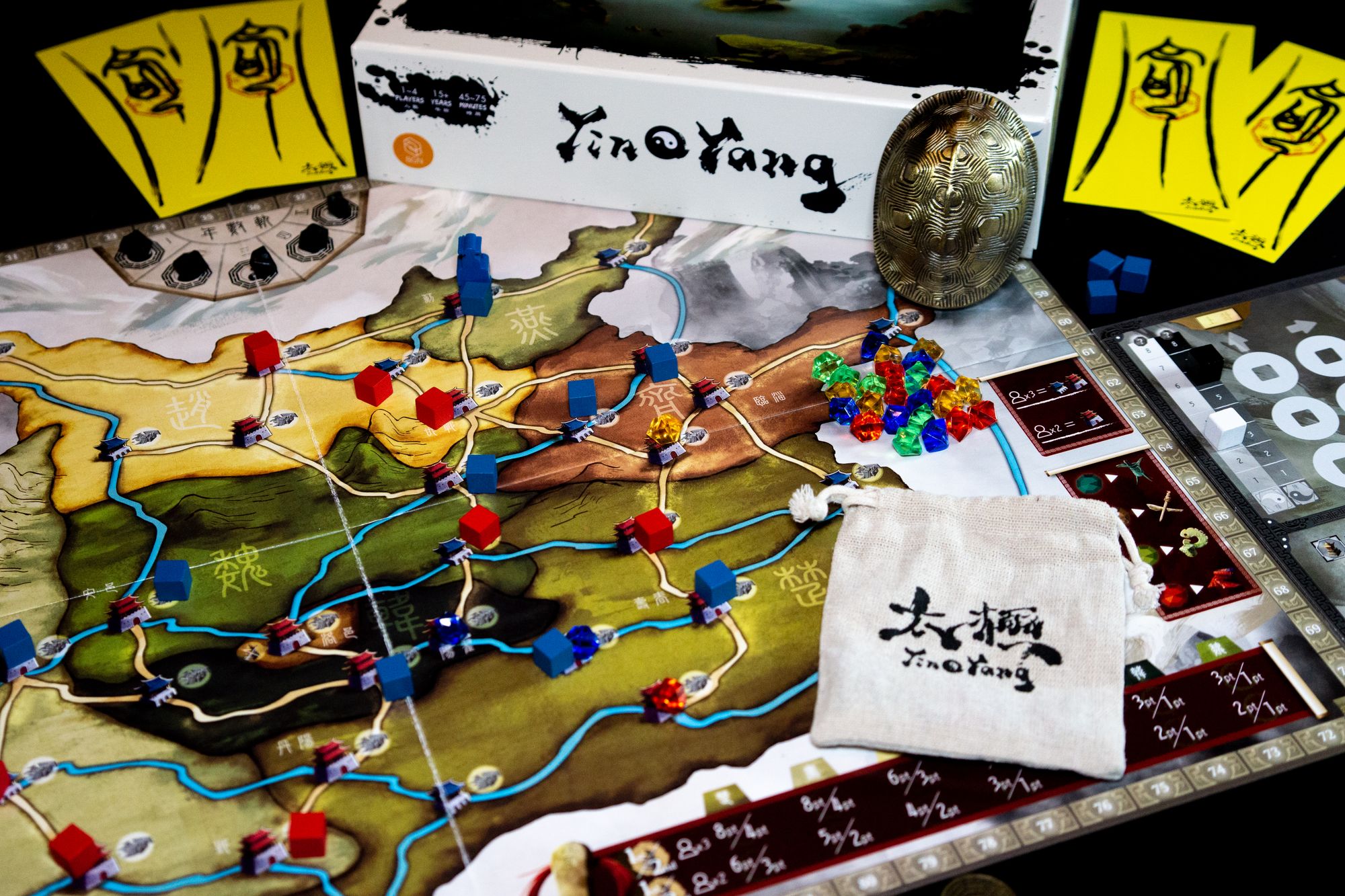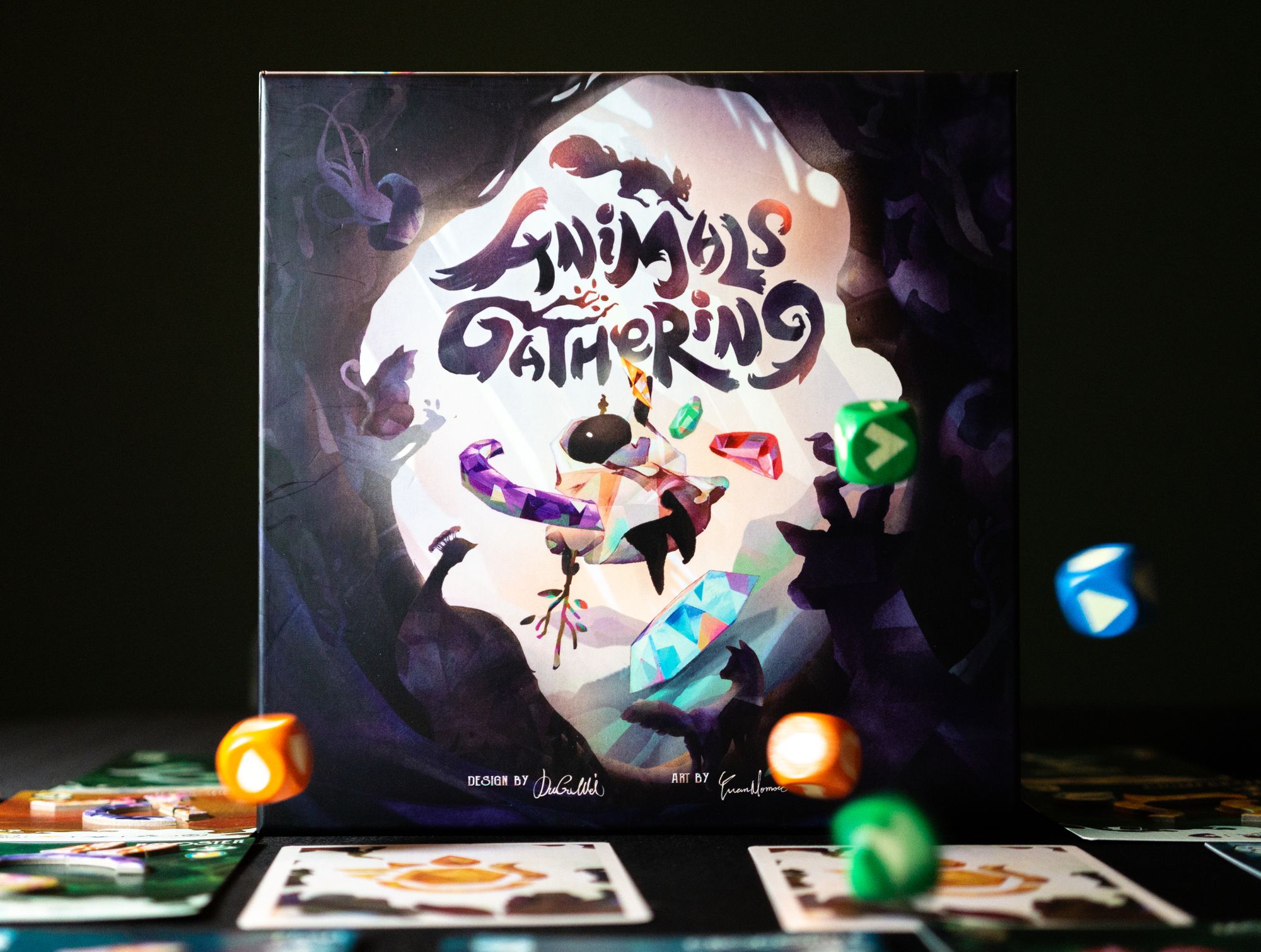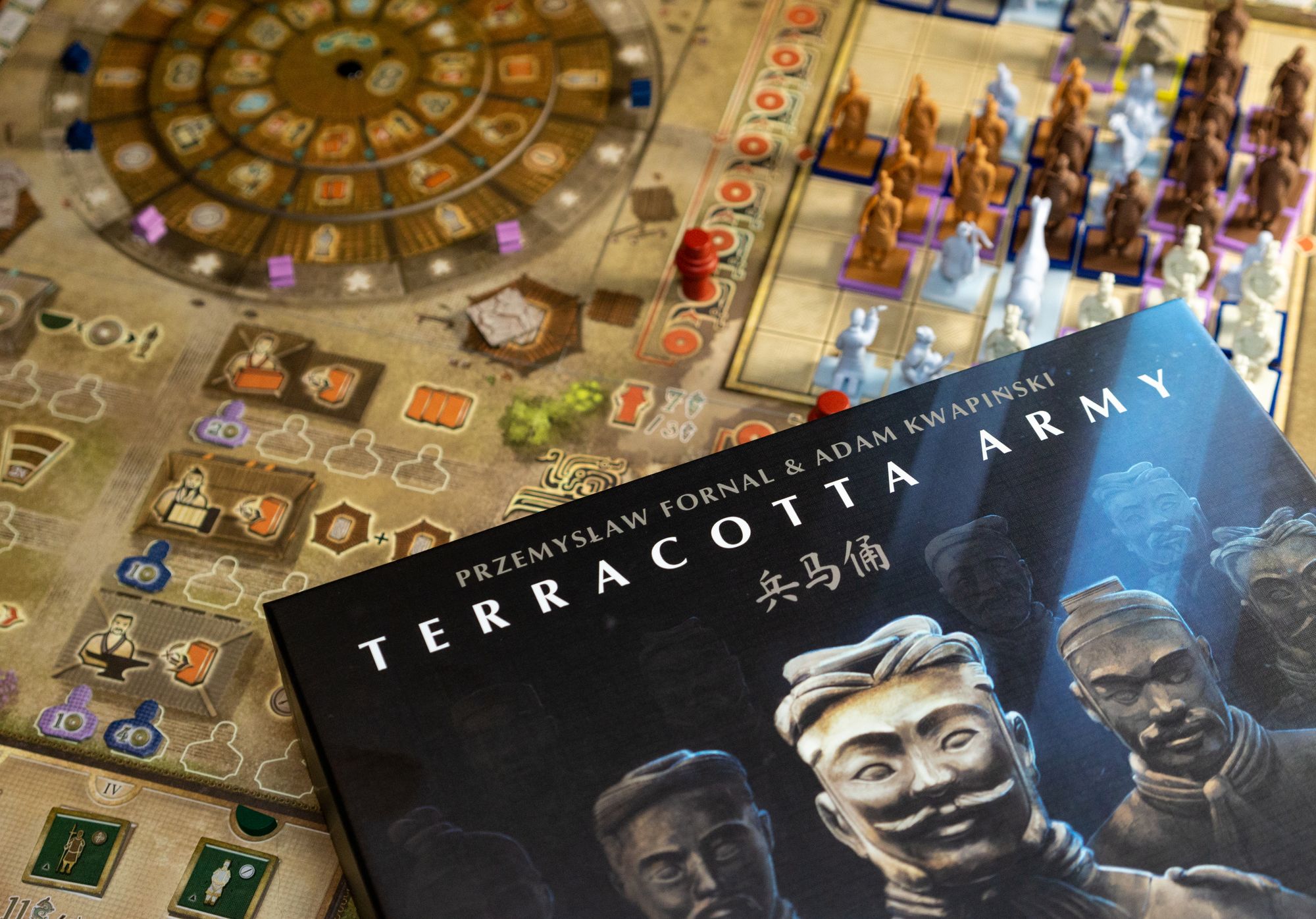Review: Wayfarers of the South Tigris
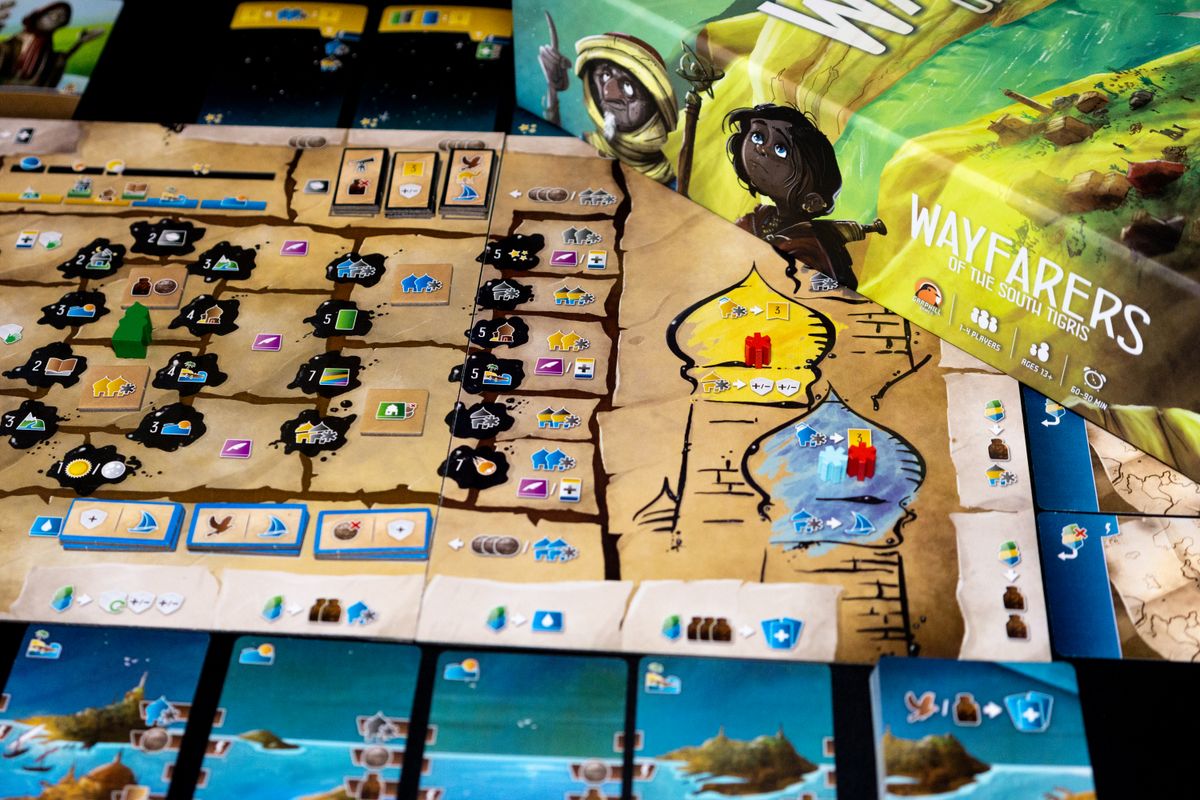
Explore the waterways, map the land, and chart the stars in medieval Baghdad.
Designed by S J Macdonald and Shem Phillips and published by Garphill Games
👤 1-4 players
🧩 Open Drafting, Tableau Building, Dice Placement
⚖️ Medium - Heavy
Overview
Wayfarers of the South Tigris is set during the height of the Abbasid Caliphate, circa 820 AD. As brave explorers, cartographers and astronomers, players set off from Baghdad to map the surrounding land, waterways, and heavens above. Players must carefully manage their caravan of workers and equipment while reporting back regularly to journal their findings at the House of Wisdom. Will you succeed in impressing the Caliph, or lose your way and succumb to the wilderness?
The aim of Wayfarers of the South Tigris is to be the player with the most victory points (VP) at the game's end. Points are primarily gained by mapping the land, water, and sky. Players can also earn points by upgrading their caravans, gaining inspiration from nobles, and influencing the three guilds of science, trade, and exploration. As they make discoveries, players will want to quickly journal their progress. The game ends once one player's marker reaches the journal track's far right column.
—description from the publisher
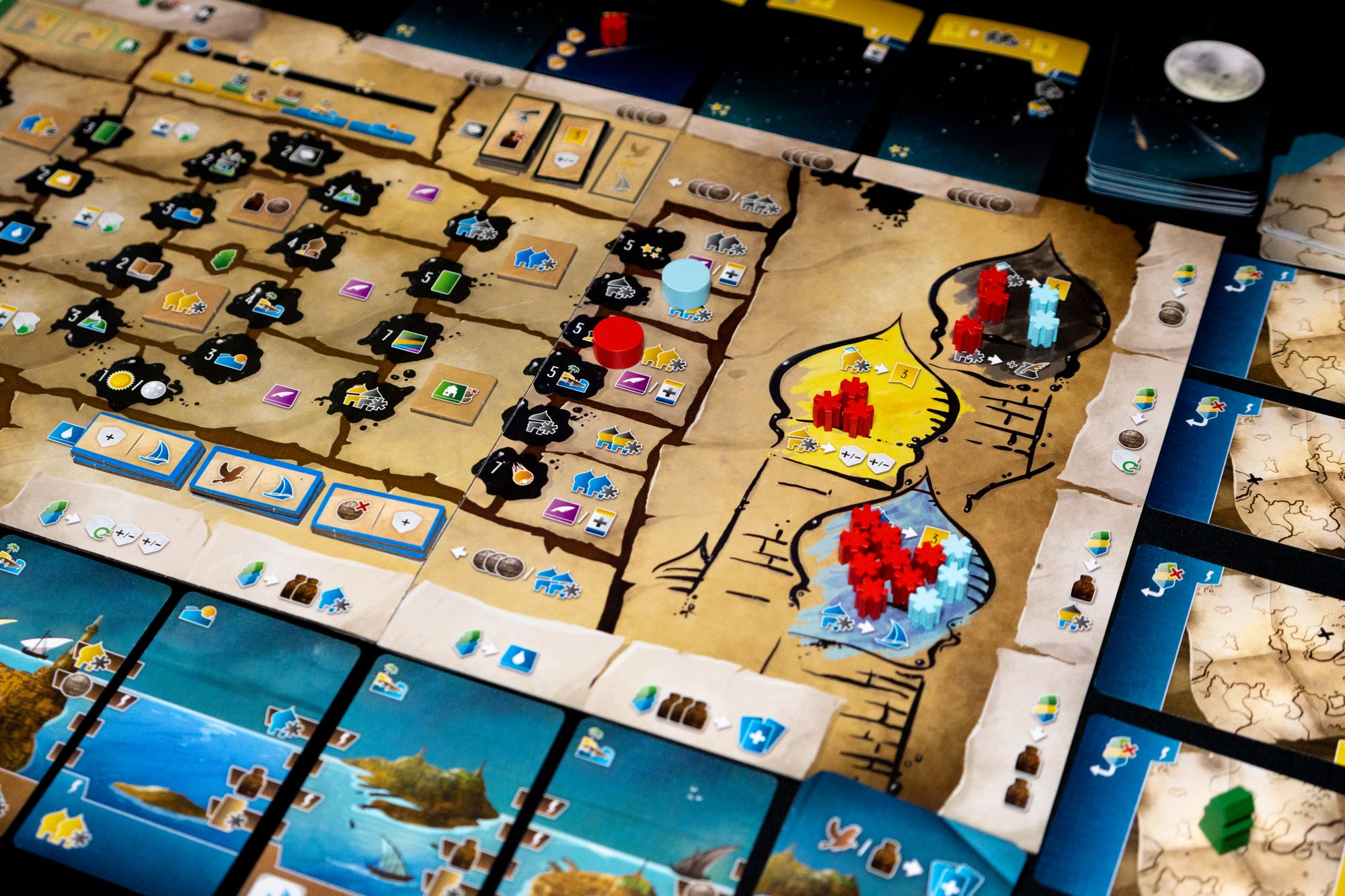
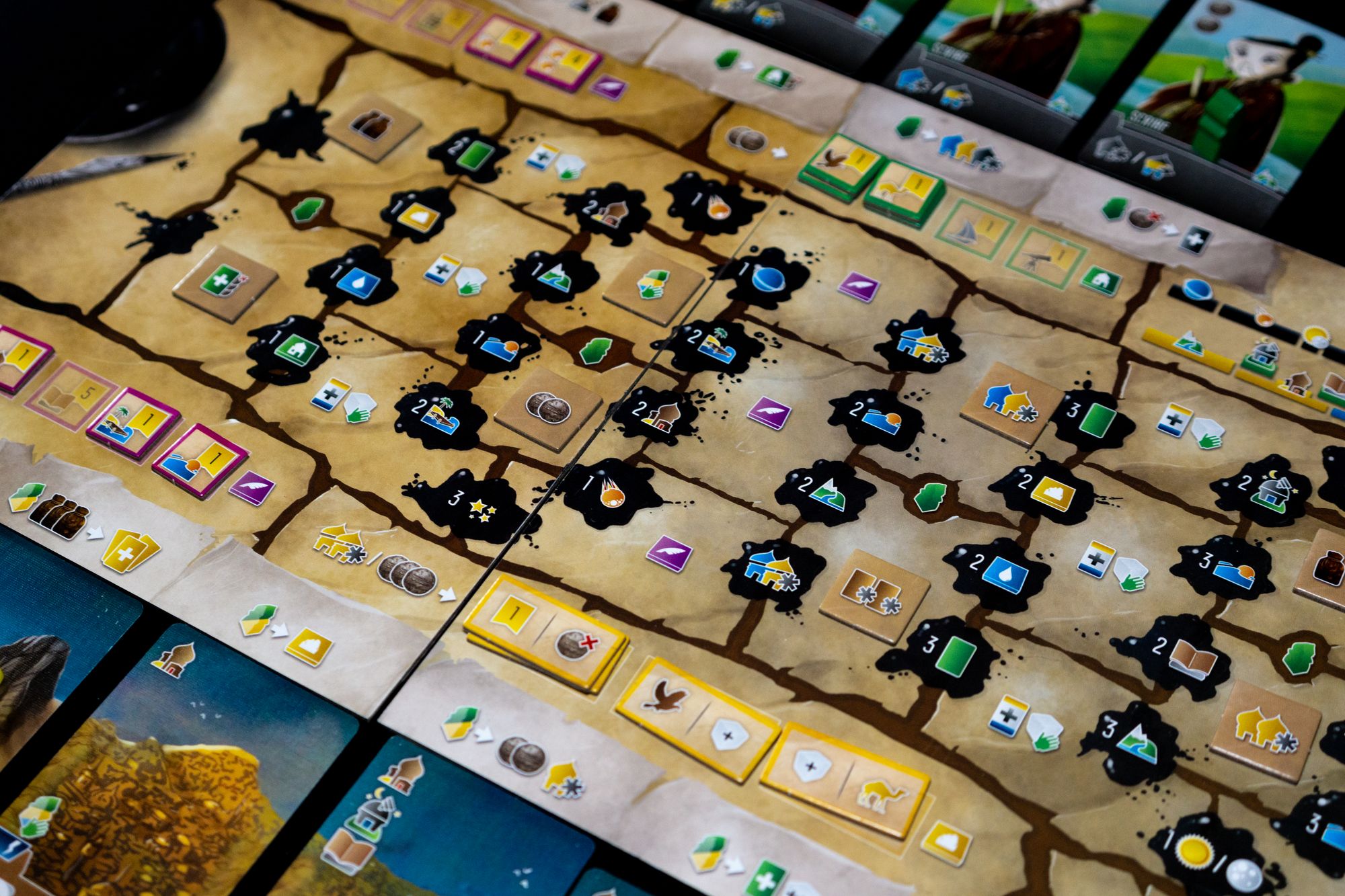
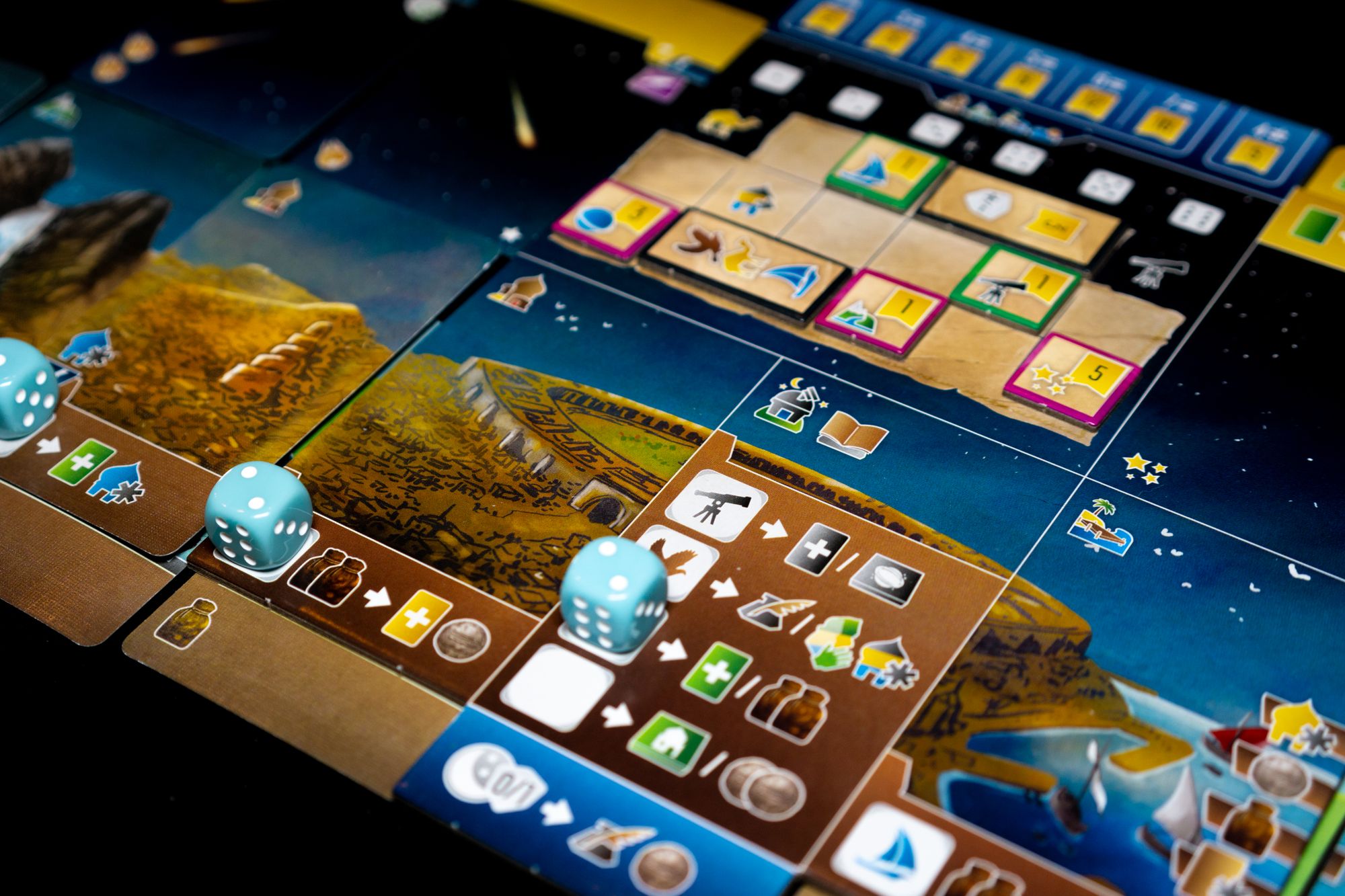
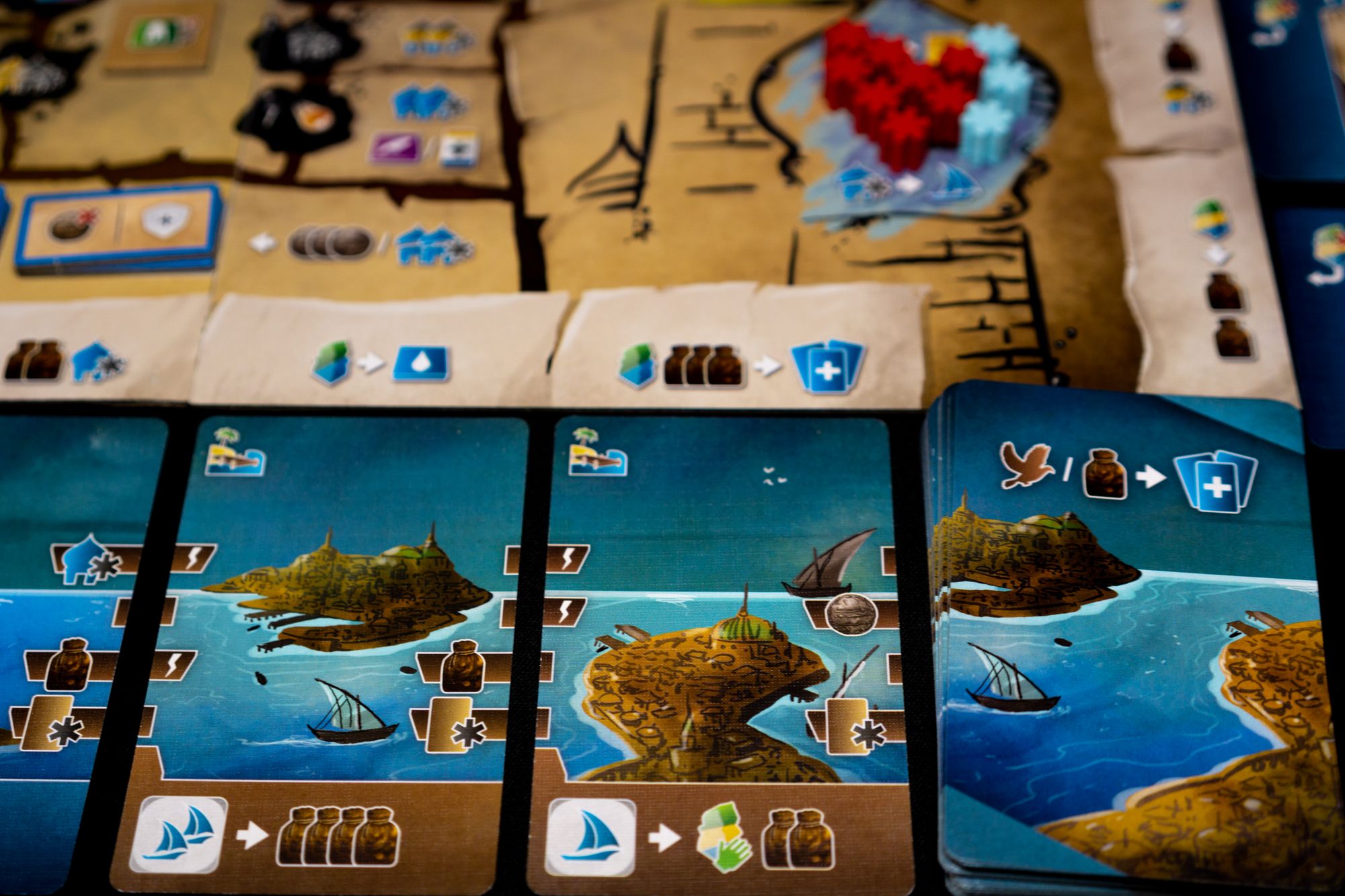
Gameplay
Wayfarers of the South Tigris is played over an undetermined number of turns. Starting with the first player, each player will take a turn, followed by the next player in clockwise order. This continues around and around the table until the end game is triggered. On each of their turns, players must either place a Die, place a Worker, or Rest.
Workers are placed on the central board and cards. Most cards have an action assigned to them, as shown on the board; when you place a worker on that card, you activate that action. That worker stays on that card and is retrieved by the person who acquires that card. So workers are not owned by any player once placed, as they can be retrieved by anyone afterward. Each action space has a requirement of which workers can be placed there.
Dice are placed on your tableau consisting of land, water, townsfolk, space, and inspiration cards. Action Spaces can have symbol requirements; the value of your dice determines which symbols you have based on your upgrade tile area. You can place dice and act as shown if you have the required prerequisites.
Once you run out of options, you can choose to Rest. This will refresh all your placed dice and allow you to progress the Journal track. You can also activate other rest abilities you've acquired on townsfolk cards.
Your goal is to influence tribes, progress on the journal track, collect a combination of cards, and build upgrades to create powerful scoring opportunities unlocked with the Space and Inspiration cards.
The end game is triggered once a player reaches the last column of the Journal track.
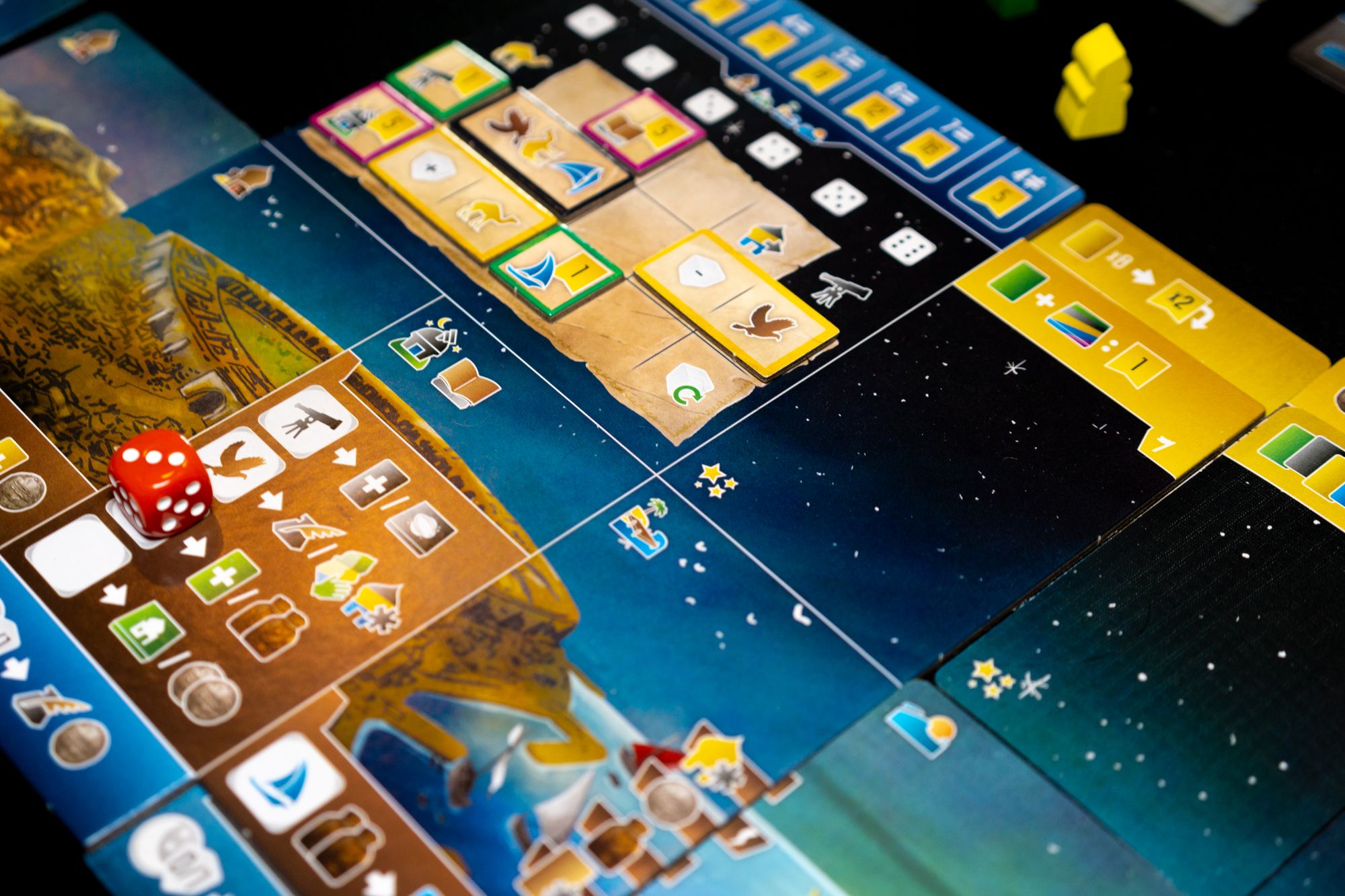
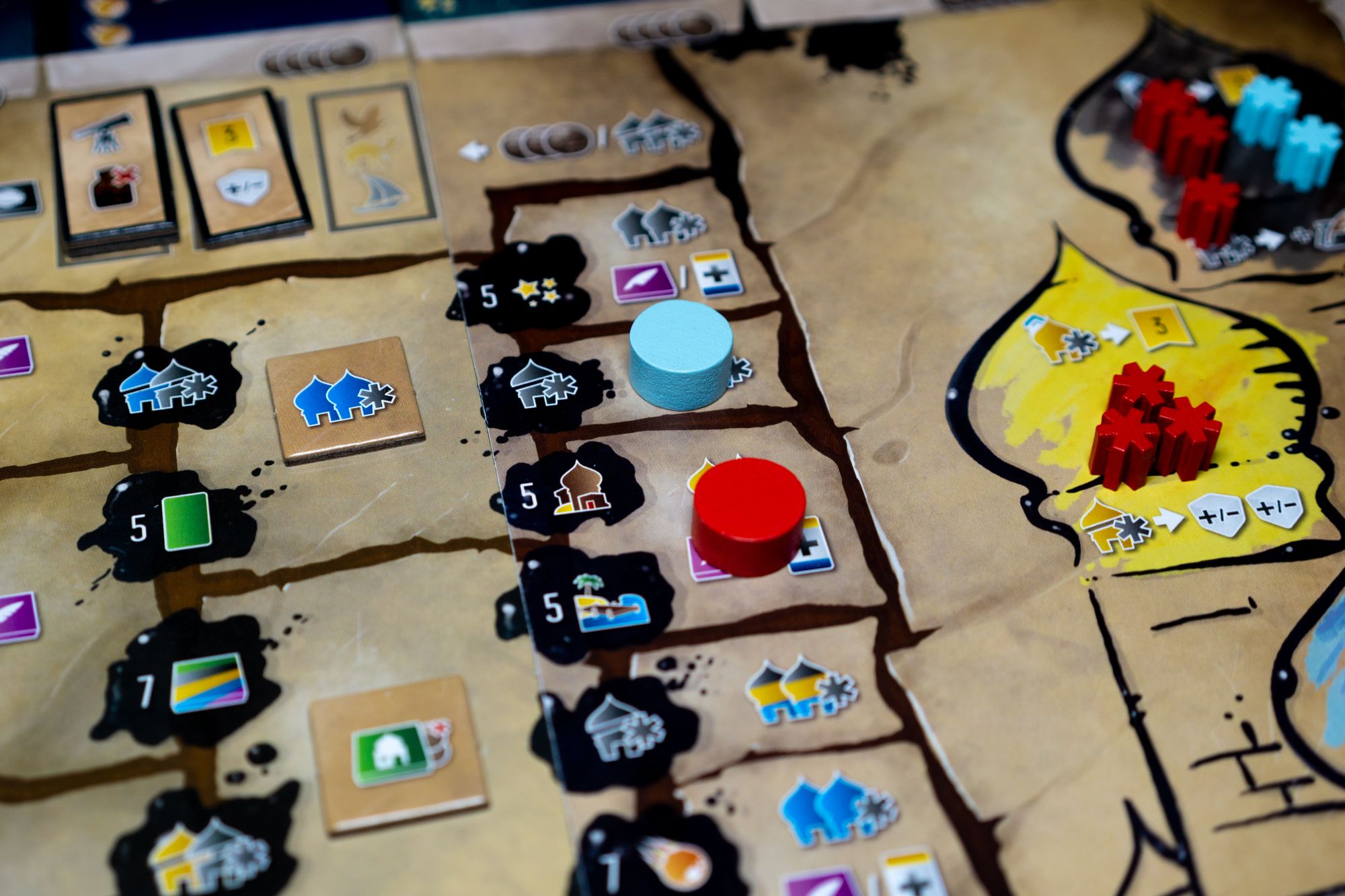
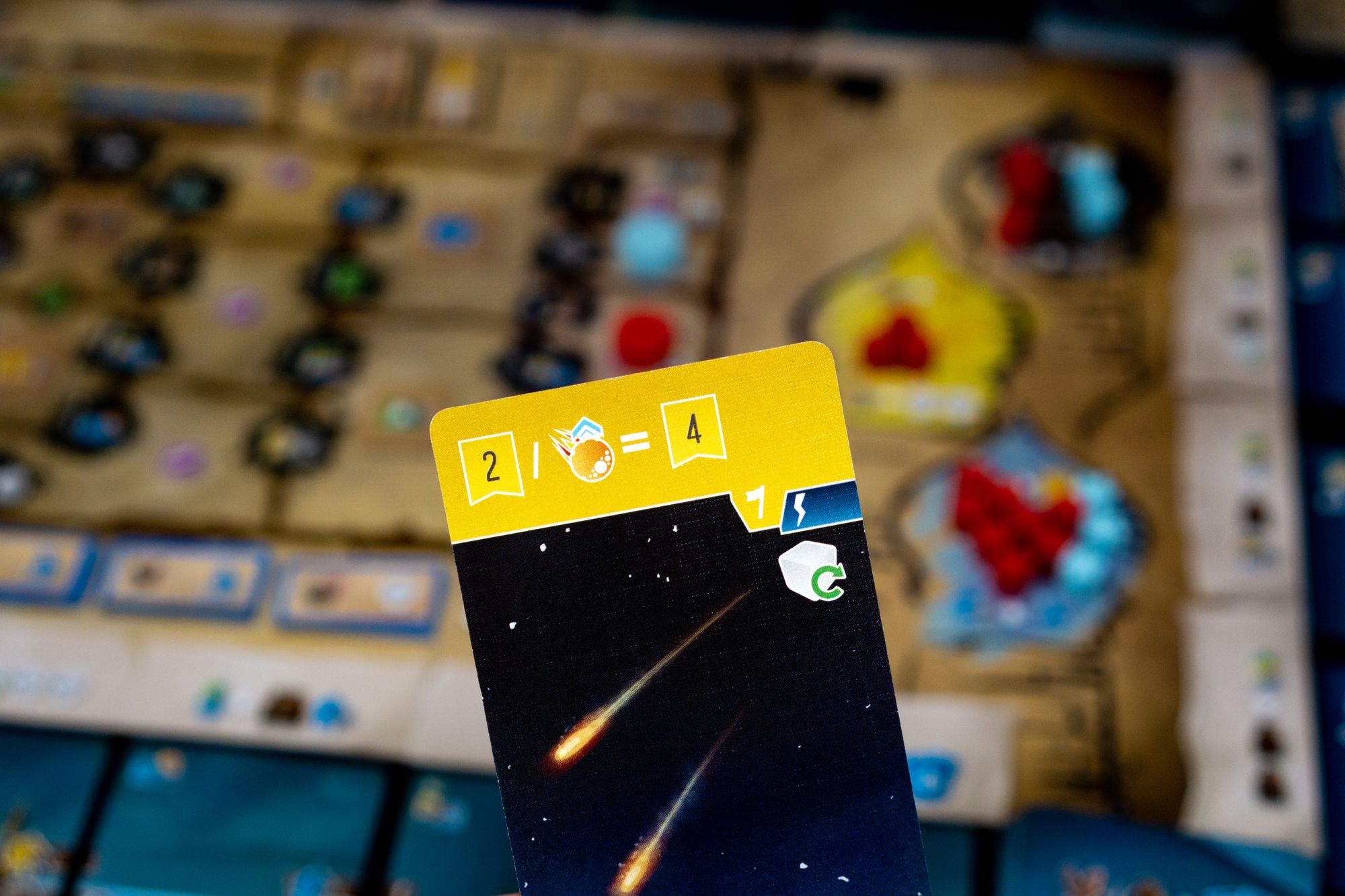
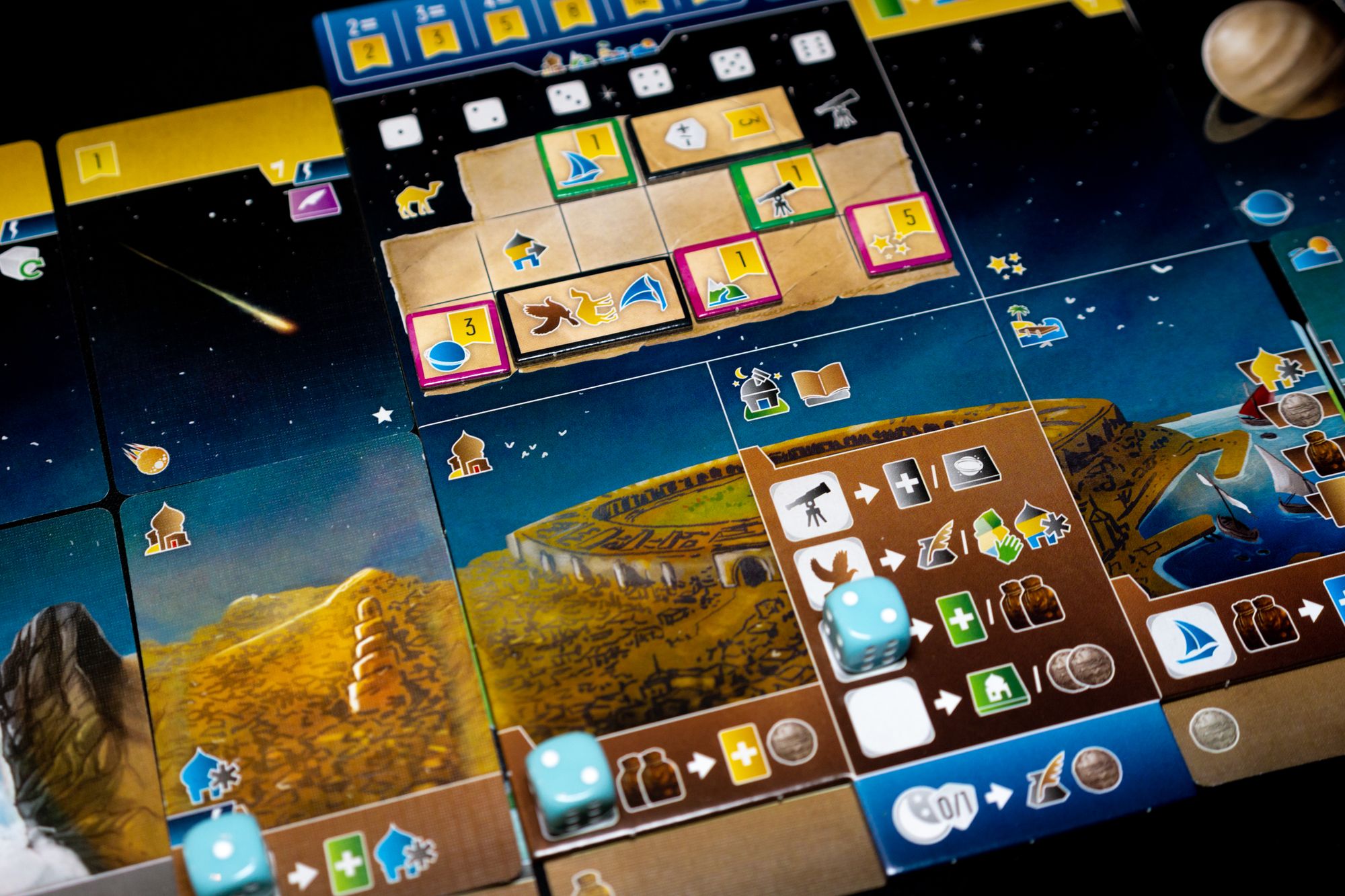
Thoughts
I did my best to explain the gist of the game in the gameplay section above. This game is pretty hard to teach, so you should see the above description more as a short overview and summary than a full-on gameplay explanation. Having enjoyed all installments of the West Kingdom series from Garphill Games, I'm super excited about the South Tigris series. As announced earlier, the South Tigris series introduces dice in different ways to open up new avenues for designers Macdonald and Phillips.
Wayfarers of the South Tigris is the first title in the South Tigries series, and it uses dice in a dice placement kind of way. You start with a few dice placement spots printed on your board, but you can expand those options as you collect more land and sea cards. You roll your dice, but there are plenty of ways to manipulate those dice to get the value (which translates to icons) you need. You can shape the upgrade part of your player board to improve the effectiveness of specific dice values with icons, discounts, or other benefits. Of course, there is a little bit of luck involved, but for me, this isn't an issue as I think dice placement is a fun mechanic in euro games, with Castles of Burgundy and Grand Austria Hotel as prime examples of dice in euro games done right. I think Wayfares can be added to this list.
Worker placement is also integral in this game and comes with a fun twist, as workers can switch owners during the game. You place workers on cards, and if somebody retrieves that specific card, they get the accompanying worker for use later on. While I see the dice placement as the prime focus of getting the actions you need, the workers can be seen as a bonus and are very useful if you're missing just a bit of a resource or a specific card in your tableau.
Gaining influence with the three tribes is also essential as you can spend those influence to gain benefits, or if you have the majority of influence in a tribe at the end of the game, you score 3 points. Some benefits also allow you to place an influence marker on specific cards; if another player interacts with that card (acquires or places a worker), they need to pay you a coin or provision. This can be seen as a bit of take-that, but usually, I use it to reserve a card for future purchases as other players are less inclined to buy a card due to the added cost of the influence marker.
If you see Wayfarers for the first time on a table, you're probably overwhelmed by the vast amount of information. The central board with all the different icons and the 5 card rows are hard to digest at first. Luckily Garphill Games have mastered the art of iconography, so after your first play, you're already better prepared for future plays. I had a hard time teaching the game to others as there is a lot to cover and see upfront. Some elements are also pretty abstract and hard to correlate to the theme. I've had the same experience teaching Viscounts of the West Kingdom, and I would rate them equal in complexity and learning curve.
Don't expect to score many points when playing Wayfarers for the first time. Wayfarers awards players that specialize in a specific scoring area. Finding good scoring combinations is an important aspect that takes a few plays to understand fully. This is one of the game's highlights as you try to build a perfect tableau for your space-scoring cards. You also need to plan because otherwise, you might feel stuck on the journal track as you need to meet certain conditions to advance.
The artwork and components from The Mico are beautiful as always and bring the theme into the game. The South Tigris series has also switched to the standard Ticket-to-Ride size box that has a good insert for once. As with the West Kingdom series, the South Tigris series might see some expansions in the future that should now fit in the base game box instead of having to buy a separate collectors box.
I think the game shines at two or three players; you need a lot of horizontal table space if your tableau grows, so a large table is recommended. It might be a bit too long with four players, but I haven't played it at that player count. The main board consists of 3 parts that can be randomly flipped for a different journal track configuration each time you play.
👍 Dice & Worker placement combo neatly integrated
👍 Artwork fits the theme
👍 Satisfying feeling that awards intelligent play
👍 plenty of replayability with variable board/card display set-up
➖ Can be overwhelming
➖ You need a large table for high player counts
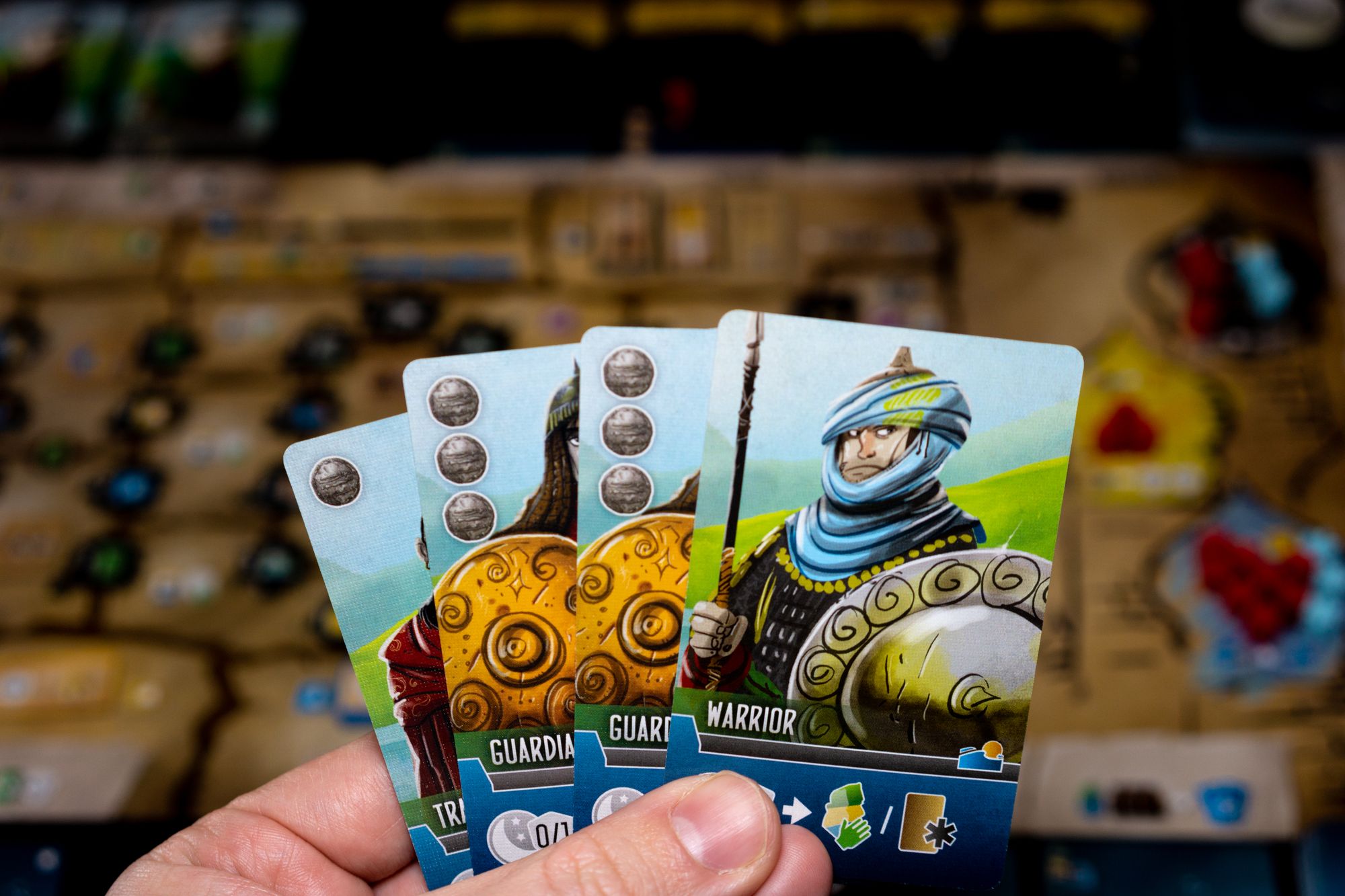
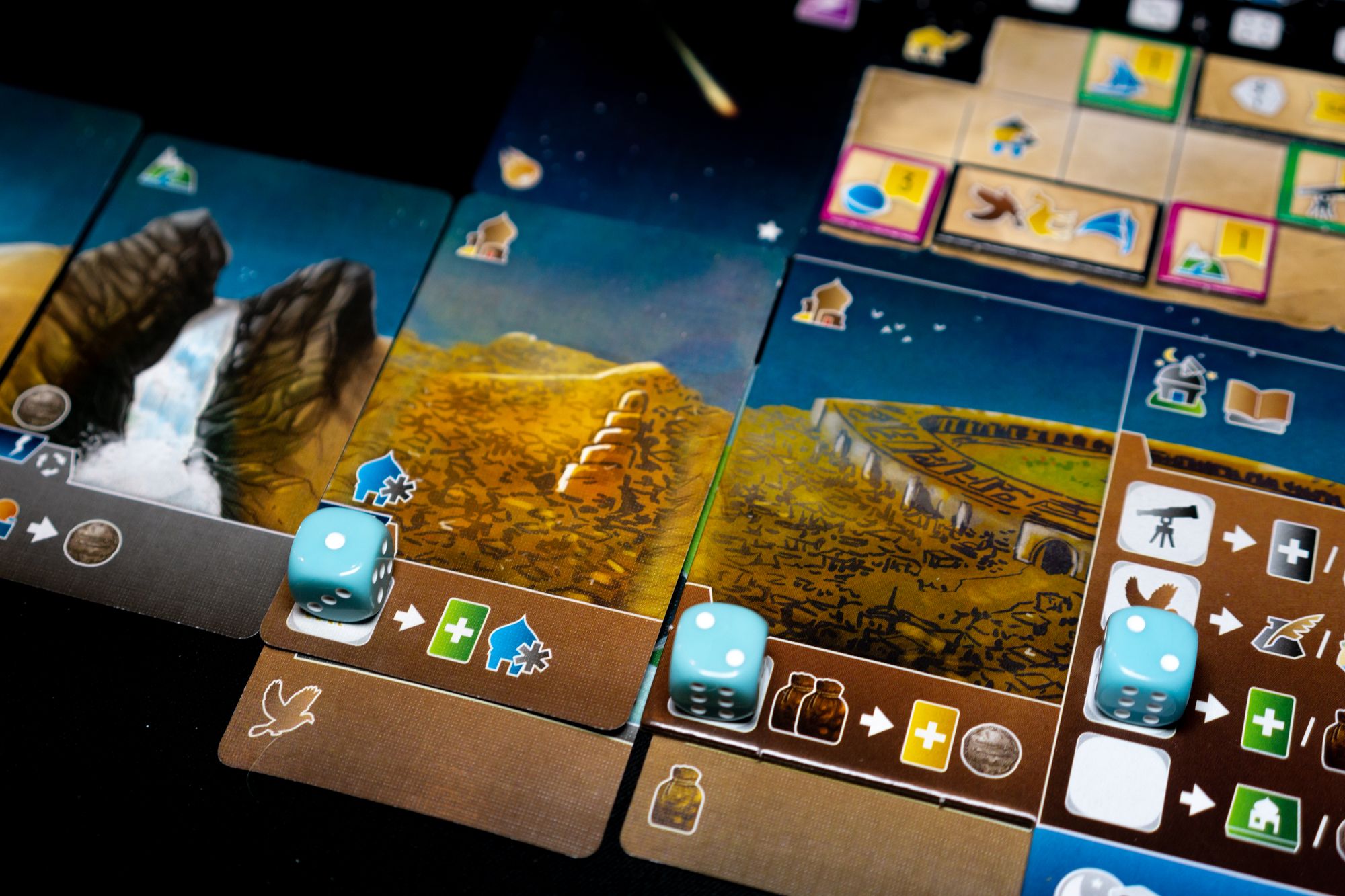
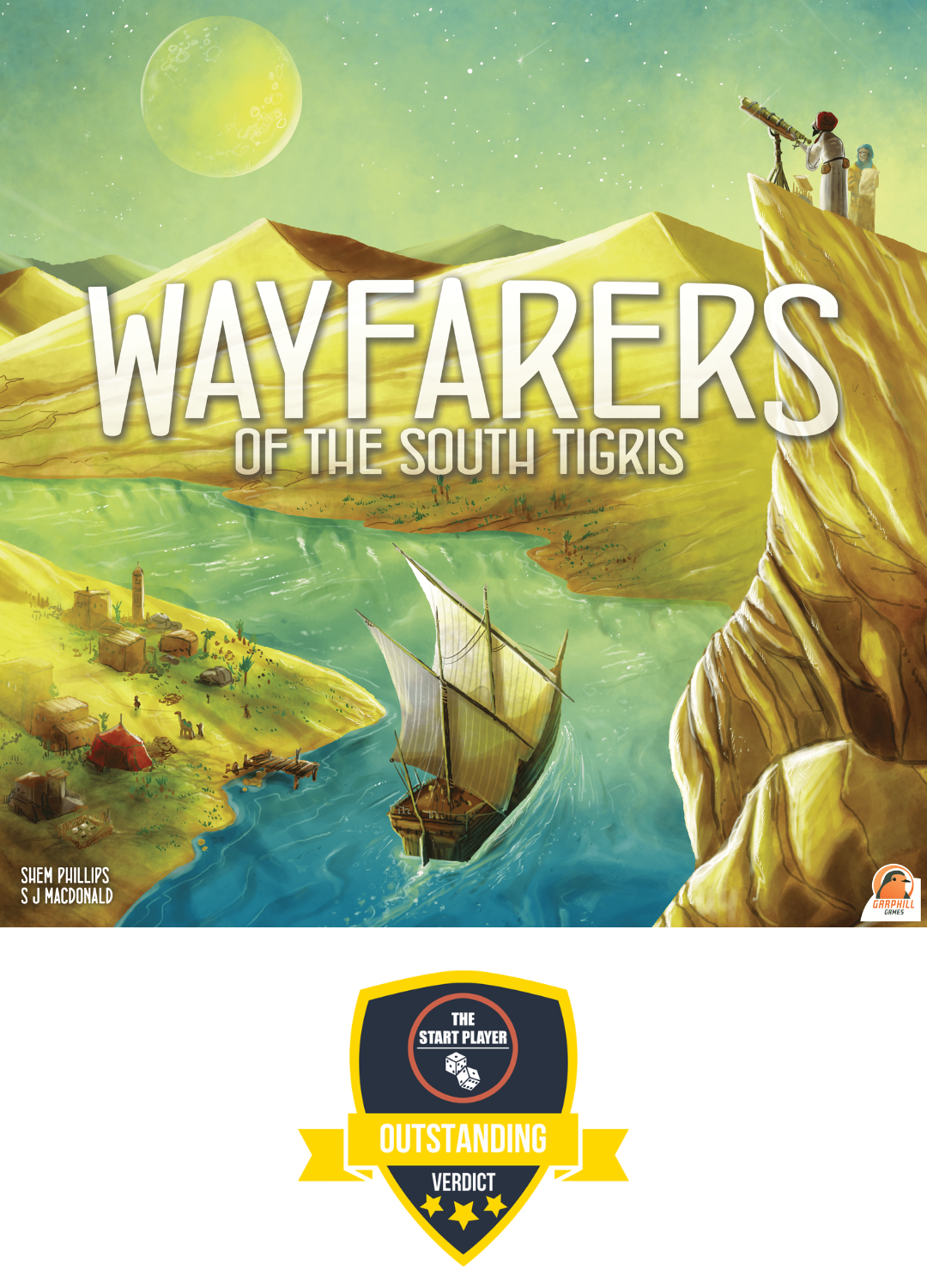
Garphill Games delivered with their West Kingdom series, and all eyes were now aimed at the new South Tigris series. Right out of the gate, Garphill delivers an outstanding dice & worker placement game with ambitious mechanics and innovative ideas. Macdonald & Phillips once again prove they can take any mechanic and turn it into a Garphill Game which is now becoming almost like its own category with perfect iconography and artwork from The Mico. Wayfarers of the South Tigris is now on-par with my favorite West Kingdom game, Paladins.
